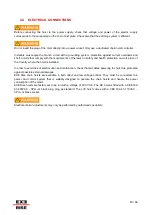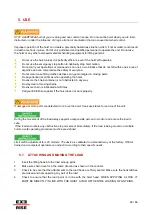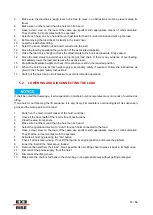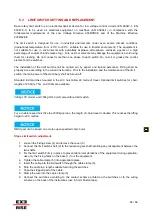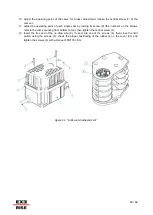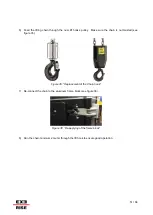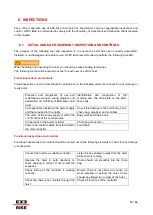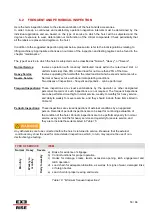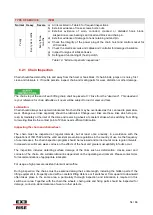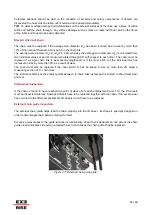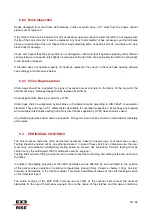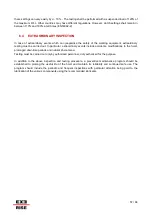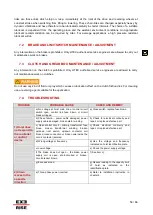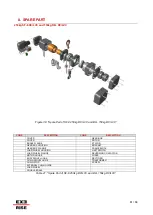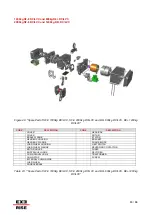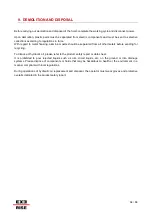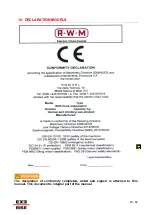
59 / 66
links are those links which stop on, resp. immediately at the inlet of the drive and reversing wheels at
constant stroke when switching from lifting to lowering. These chain links are charged especially heavy by
dynamic vibrations and have therefore to be lubricated carefully in shorter intervals. The choice of a suitable
lubricant is dependent from the operating place and the existent environment conditions. An appropriate
lubricant recommendation can be inquired by Litec. For average applications a high pressure resistant
lubricant will do.
7.2
BRAKE AND LIMIT SWITCH MAINTENANCE / ADJUSTMENT
Any intervention on the brake is prohibited. Only LITEC authorised service engineers are allowed to carry out
maintenance work on brakes.
7.3
CLUTCH AND GREAR BOX MAINTENANCE / ADJUSTMENT
Any intervention on the clutch is prohibited. Only LITEC authorised service engineers are allowed to carry
out maintenance work on clutches.
Do not use any kind of fluid or spray which causes a lubrication effect on the clutch friction disk. For cleaning
use a resolving agent suitable for the application.
7.4
TROUBLESHOOTING
TROUBLE
PROBABLE CAUSE
CHECK AND REMEDY
1) Hoist does
not respond to
the controller
or control
device
a) No voltage at hoist main line or control circuit
switch open; control line fuse blown or circuit
breaker tripped.
a) Close switch, replace fuse blown.
b) Phase failure
– power cable damaged; power
supply cable damaged; broken stator winding.
b) Check for electrical continuity and
repair or replace defective part.
c) Open control circuit
– primary transformer fuse
blown; broken transformer winding; broken
up/down limit switch; up/down contactor coil
broken; loose connection or broken wire inside the
circuit; contactor jammed.
c) Check electrical continuity and
repair or replace defective part.
d) Wrong voltage or frequency.
d) Use the voltage and frequency
indicated on hoist identification plate.
e) Low voltage.
e) Check the power supply voltage.
f) The brake does not open
– the brake power
supply coil is open, short-circuited or broken;
circuit breaker blown.
f) See item c).
g) Excessive load.
g) Reduce loading to the capacity limit
of
hoist
as
indicated
on
the
identification plate.
2) Chain
moves in the
opposite
direction
a) Three-phase power inverted.
a) Refer to installation instruction in
chapter 4.

